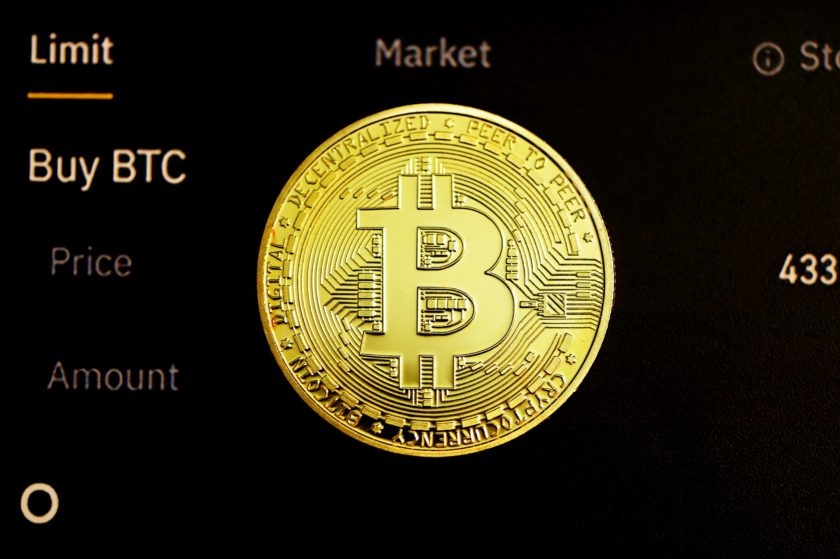This week, a judge adjudicating the ongoing Securities and Exchange Commission (SEC) versus Ripple, the blockchain company, issued a landmark ruling. At the same time, Ripple announced crucial strategic expansions. Also, the number of staked ethereum (ETH) rose to record highs. Meanwhile, crypto adoption rate remained considerably high despite ongoing regulatory considerations. The crypto scene was also flushed with apprehensions concerning Ledger’s recently introduced seed recovery feature.
Ripple secures landmark ruling
On May 16, Judge Analisa Torres, the US district judge overseeing the lawsuit between Ripple and the US SEC, delivered a series of rulings on motions previously filed by both parties.
In one of the rulings, Judge Torres denied the SEC’s motion to seal internal documents relating to the infamous 2018 speech from William Hinman, a former SEC director. The ruling essentially accorded Ripple the right to make the documents available to the public following multiple attempts from the SEC to keep its content private.
Ripple and some of its executives had, in the past, emphasized the significance of the documents, deploying all its arsenal to ensure that they are released to the public.
Stuart Alderoty, the General Counsel at Ripple, disclosed in October 2022 that they had to fight for 18 months to access the documents.
Following the recent ruling, Ripple CEO Brad Garlinghouse revealed that the lawyers were already working towards releasing the documents.
However, a subsequent report suggested that both parties in the litigation made a formal plea for an additional week’s extension, extending until June 13, 2023. The extension is specifically sought to enable the submission of their cross-motions for summary judgment and the related exhibits in an unaltered and unredacted format. The exhibits include the Hinman documents.
Ripple also made significant moves toward expanding its offerings. Brad Garlinghouse, the CEO of Ripple, while speaking at the Dubai FinTech Summit, said they were looking to expand beyond enterprise liquidity provision. Ripple will look to venture into crypto custody and tokenization and will look to deploy over $1b to attain this objective.
Subsequently, on May 17 Ripple announced the acquisition of Metaco, a leading digital asset custody and tokenization firm based out of Switzerland, for $250 million. The move would give Ripple the chance to expand into the digital custody and tokenization scene.
This week, Ripple also unveiled a central bank digital currency (CBDC) platform that was first piloted in March 2021. The solution is built using the same technology as the XRP Ledger (XRPL). It aims to provide central banks and financial institutions with an opportunity to develop their own digital currencies.
Adoption in China
Reports on May 15 highlighted China’s objective to train up to 500,000 professionals in the web3 scene through its recently-introduced blockchain research center.
This objective underscores China’s intentions to leverage the potential of the nascent blockchain technology despite outlawing cryptocurrencies, including bitcoin (BTC).
The latest development elicited responses from US-based crypto investors who called attention to the perceived backward approach the US has regarding blockchain and crypto.
China also made headlines after welcoming the world’s first blockchain-based SIM card, generically dubbed BSIM, that’s compatible with mobile platforms such as Android and iOS. The SIM was unveiled by the Conflux Network in collaboration with China Telecommunications Corporation, a state-owned telecommunications firm based in China.
Samsung partners with BoK as more family offices embrace crypto
On May 15, South Korea’s multinational electronics firm Samsung partnered with the Bank of Korea (BoK), Korea’s central bank, to conduct research on the development of a CBDC-inclined offline payment platform.
In a separate development, a report from Goldman Sachs suggested that digital asset adoption might be skyrocketing among family offices. The global bank surveyed up to 166 family offices across several regions, including Asia-Pacific (APAC), Europe, the Middle East and Africa (EMEA) and the Americas.
The report went on to reveal that up to 32% of surveyed family offices have exposure to digital assets, including tokens of decentralized finance (DeFi) projects and non-fungible tokens (NFTs). In addition, 26% of respondents confirmed that they have outright investments in cryptocurrencies.
Pakistan won’t budge on crypto; US grapples regulatory uncertainty
Last week, Pakistan, through its minister of state finance, Dr. Aisha Pasha, reaffirmed its commitment to keep cryptocurrencies banned.
In a statement on May 17, Dr. Pasha confirmed that the government has no intentions to legalize digital assets despite rising interest. The minister cited inherent risks associated with cryptocurrencies.
Meanwhile, the Chamber of Digital Commerce implored the US Congress to enact a proper regulatory framework for cryptocurrencies in the country.
In a separate development, the US SEC, which has been criticized by key players for its aggressive crypto enforcements, recently ordered Grayscale Investments to withdraw its application for the launch of a filecoin (FIL) Trust. The SEC asserted that filecoin fits the description of a security, a stance it holds for several digital assets, including XRP.
In addition, Grayscale had to suspend plans to launch an ethereum futures exchange-traded fund (ETF) as a result of concerns raised by the SEC which bordered on liquidity and the position of the law on whether ether is a security or commodity. Bitwise Asset Management also had to put a pause on similar plans to launch an ETH futures ETF.
Due to the current lack of regulatory clarity in the United States, Tom Emmer, the majority whip of the US House of Reps, re-introduced a bill seeking to clarify whether a crypto asset is a security or a commodity. The bill, which was re-introduced in conjunction with Representative Darren Soto, could help distinguish assets which are securities from commodities like BTC.
Regulatory progress in Europe
Meanwhile, Europe continues to make significant progress towards providing regulatory clarity for the digital asset industry. A major step forward this week involved the approval of the markets in crypto-assets (MiCA) legislation by The Economic and Financial Affairs Council (ECOFIN) of the European Union.
ECOFIN comprises 27 finance ministers from the states in the European Union. Interestingly, all 27 finance ministers voted unanimously in favor of the MiCA legislation, bringing it a step closer to a full-scale implementation. This legislation was formally adopted by the EU on April 20.
While the EU made headway toward crypto regulation this week, the United Kingdom continued to entertain propositions. The latest proposal suggested that retail trading in unbacked digital assets be regulated like gambling. This suggestion was made by the UK House of Commons Treasury Committee.
Ledger faces heavy criticism over “Recover” feature
Ledger took center stage this week, but for the wrong reason. The prominent hardware wallet manufacturer unveiled its ID-based “Ledger Recover” feature which aims to give users the opportunity to recover the seed phrase should they lose it. Ledger noted that it plans to include the feature in the 2.2.1 firmware update to its Nano X wallets.
The feature, which should ordinarily be beneficial to customers that might lose their seed phrase, received widespread condemnation and led to major concerns regarding Ledger’s security. Notably, the feature suggests that a customer’s seed phrase is accessible to Ledger, which defeats the whole idea of a hardware wallet.
In an attempt to defend the feature, Ledger, in a tweet, that “technically speaking it is and always has been possible to write firmware that facilitates key extraction. You have always trusted Ledger not to deploy such firmware whether you knew it or not”, catalyzing criticisms.
The firm has since then deleted the tweet, with CTO Charles Guillemet posting clarifying tweets to assuage fears. At the same time, Éric Larchevêque, co-founder and ex-CEO of Ledger, went on to emphasize that Ledger’s security is intact and the firm remains dedicated to ensuring that the wallets have no backdoors.
ETH held in exchanges declining as stakers double down
Meanwhile, ethereum (ETH) held in exchanges remains at multi-year lows.
Data suggests that the amount of ether on exchanges dropped to 17,945,575.311, a 5-year low. Wallets holding at least 100 ETH also dropped to a 6-month low.
While ETH tokens moved out of exchanges, the amount stake rapidly grew. Those staking include a whale who took part in the initial coin offering (ICO). His address staked 4,032 ETH, valued at $7.4 million at the time, after a 2.4-year dormancy.
As of May 19, there were over 20 million staked ETH, a record high. This development is roughly a month after the activation of the Shapella upgrade, allowing users to withdraw their coins.



